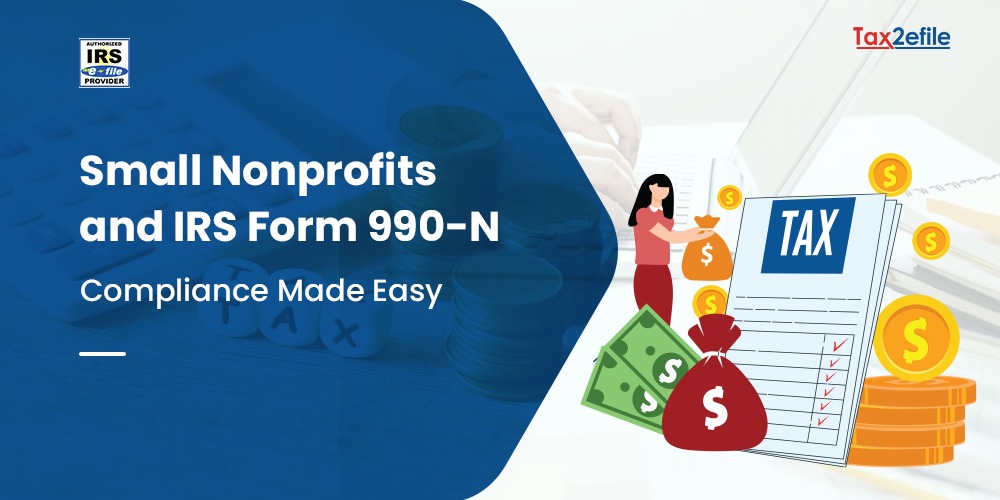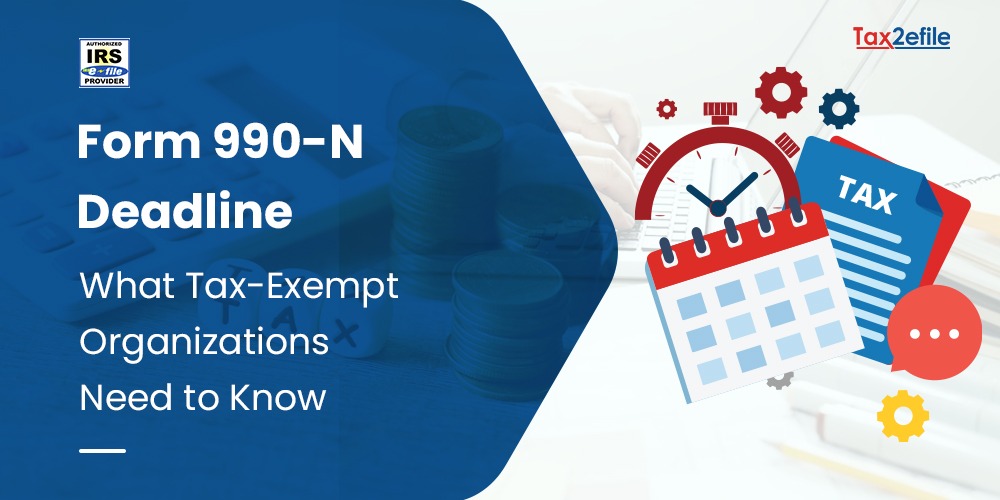- March 27, 2025

The Internal Revenue Service offers non-profit organizations tax-exempt status, as they function with a social cause and also offer a public benefit. Donations that are made towards a non-profit organization are tax-deductible to the individuals. The non-profit organization itself doesn’t pay taxes on the donations it receives and the other money it earns from fundraising activities. Most of the tax-exempt organizations, whose gross receipts are $50,000 or less, are expected to file IRS Form 990-N. They need not file their electronic notice or e-postcard as well.
Table of Contents
Who should file Form 990-N
The Internal Revenue Service requires tax-exempt non-profit organizations to file Form 990-N. Non-profit organizations are those that render charitable, scientific, literary, and educational services for the deserved. Organizations that are included under non-profits are universities, hospitals, churches, charities, and foundations. Depending on the size and the nature of their assets and their annual receipts, the non-profits should file any type of Form 990, such as 990 EZ, 990- N, or 990- PF, which is meant for private organizations. The IRS also states that if the non-profit organization fails to file the Form with the IRS for three years in a row, it will lose its non-exempt status.
Organizations that are not eligible for Filing Form 990-N
The organizations that are not eligible to file Form 990-N are as follows. They are expected to file a different Form 990 in a different format, as per the IRS instructions.
- Private sector foundations and charity units should file Form 990- PF
- Political organizations that are expected to file an annual exempt organization return should file Form 990 or Form 990- EZ.
- Tax-exempt organizations that have an annual gross receipt greater than $50,000 should file Form 990 or Form 990- EZ.
- Supporting organizations for charities and foundations should also file Form 990 or Form 990-EZ, except for integrated auxiliaries of churches, organizations that perform exclusive religious activities of a religious order, and organizations whose gross receipts are $5,000 or less.
Organizations can also choose to file Form 990 or Form 990-EZ instead of e-postcard or Form 990-N. But, if they choose to do so, then they should file the complete return. Incomplete forms will not satisfy the annual filing requirement.
Compliance with 990-N
The IRS tax Form 990-N is also termed as the e-postcard return. This is generally filed electronically through the IRS website and is due by the 15th of the fifth month after the closure of the tax year of the non-profit organization. While filing the e-postcard, the organization has to submit the following information about itself to the IRS.
- The legal name of the non-profit organization and the other names it uses
- The mailing address of the non-profit
- Mailing address and website address as applicable
- The Employer Identification Number
- The name and address of the principal officer of the organization
- A statement that supports that its annual gross receipts are $25,000 or less
E-File Form 990-N Hassle-Free with Tax2efile
An organization that fails to file IRS Form 990-N for three continuous years will lose its tax-exempt status, and the revocation of the tax-exempt status will not occur until the due date of the third year. Thus, the best option to avoid such consequences is to e-file the tax Form 990-N with a credible taxing solutions provider like Tax2efile. With them, it is possible to create a free account and enter the 990-N e-postcard information. The next step is to select the filing year, review the Form, and submit it to the IRS. Taxpayers will receive an e-mail confirmation from Tax2efile along with an IRS status update instantly.
Get Started by Registering with Tax2efile Today!

